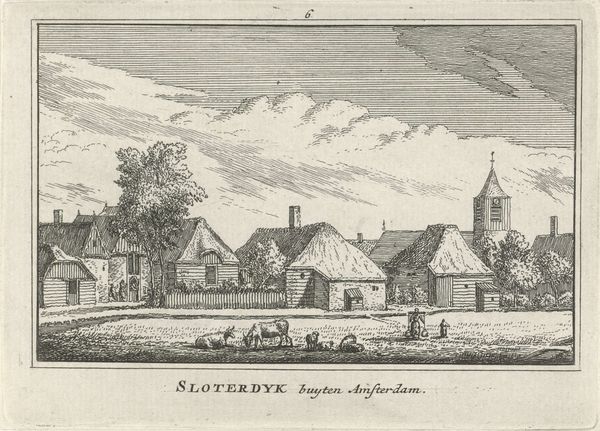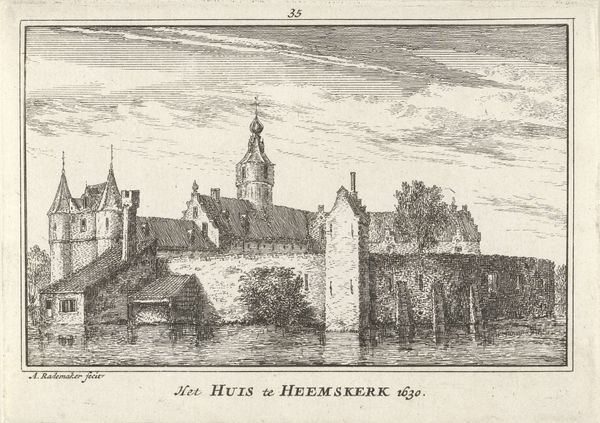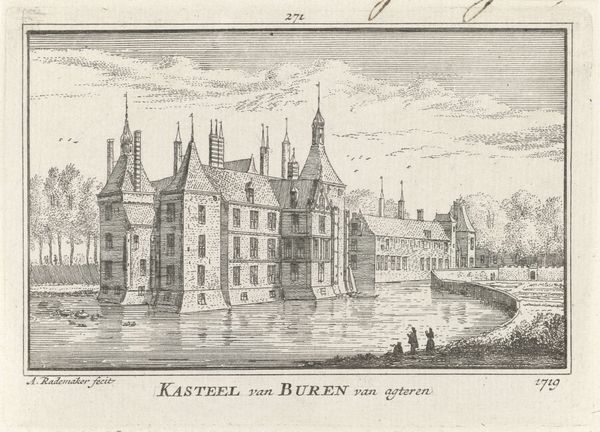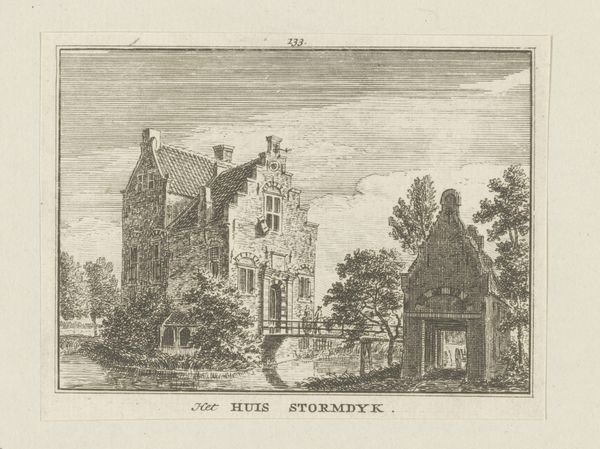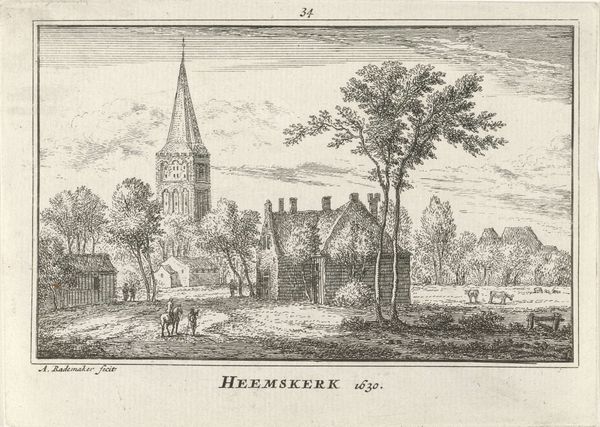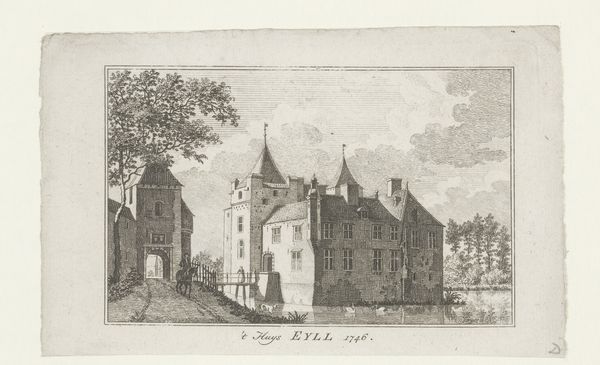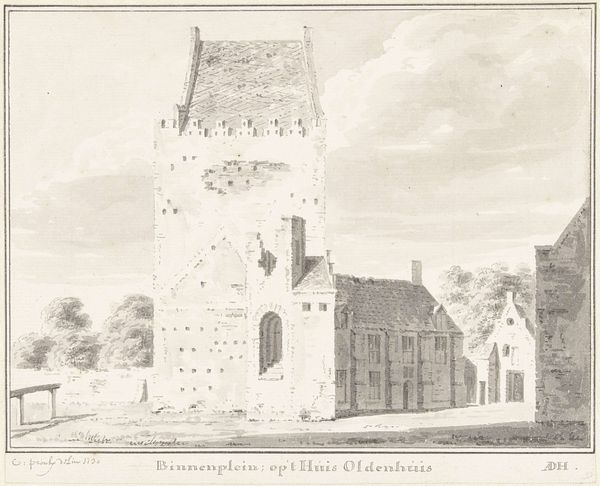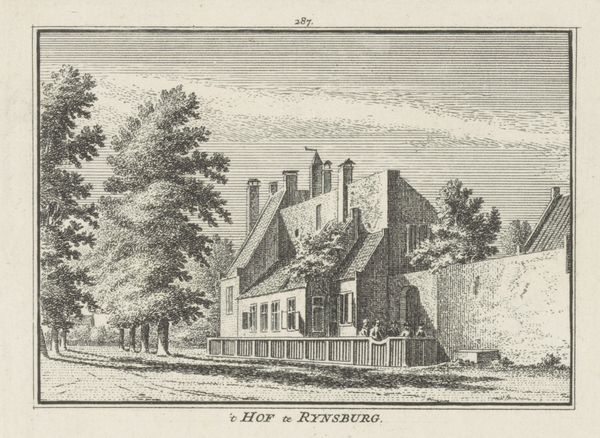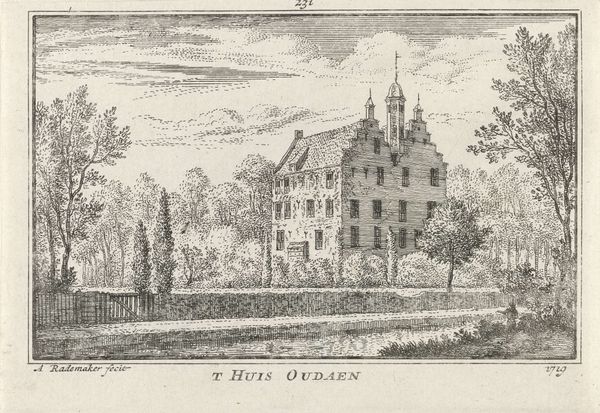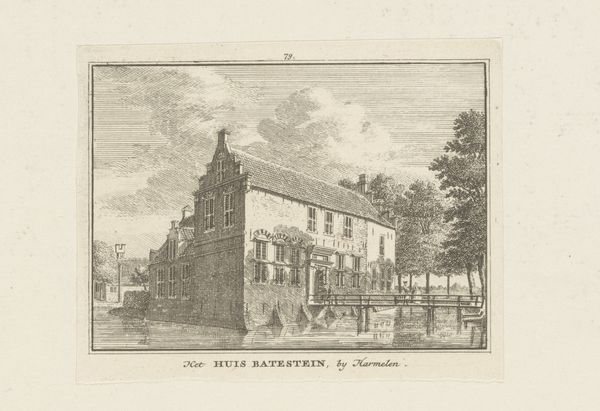
print, engraving
#
baroque
# print
#
old engraving style
#
landscape
#
cityscape
#
engraving
Dimensions: height 80 mm, width 115 mm
Copyright: Rijks Museum: Open Domain
Editor: Here we have Abraham Rademaker’s “Huis te Hinten,” an engraving from around 1730. The precision of the lines gives it a rather formal, almost detached quality. I'm intrigued by the composition—it feels meticulously planned. What structural elements stand out to you? Curator: The interplay of light and shadow, achieved through varying densities of engraved lines, articulates the form. Note how the artist uses hatching and cross-hatching to define the volumes of the buildings and the reflective surfaces of the water. Observe the horizontal bands, too, created by the sky, architecture, and ground—how do these planes influence your reading of the work? Editor: They really flatten the scene and emphasize its linear quality. I see that the artist organized all of the visual elements into these very sharp angles that create balance and perspective, but it also sort of compresses the space, which keeps the view front and center. Curator: Precisely. Also, examine how Rademaker employed linear perspective to establish a sense of depth, drawing the eye toward the vanishing point within the architectural elements. This establishes a structured relationship between the foreground and background and imbues a sense of order, wouldn’t you agree? Editor: Yes, absolutely. The controlled perspective amplifies the image’s composed structure. The balance is striking! I hadn't fully appreciated the control and thoughtfulness of Rademaker's linear technique. Curator: The success of this piece depends on your sustained contemplation of these structural dynamics, right? Ultimately, you might be capable of appreciating that, freed from considerations such as historical intent, its formal devices render this engraving aesthetically potent.
Comments
No comments
Be the first to comment and join the conversation on the ultimate creative platform.

